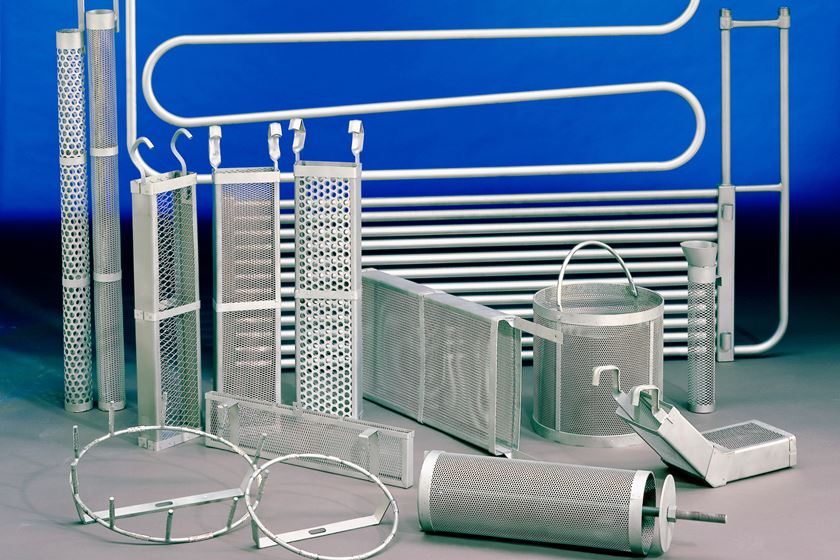Is Your Cleaning Process Effective?
Giles Dillingham Ph.D., founder and chief scientist, BTG Labs, discusses testing methods for measuring surface quality.
#asktheexpert

Giles Dillingham, Ph.D., is the founder and chief scientist of BTG Labs. Visit btglabs.com
Q. How can you determine the effectiveness of your cleaning processes?
Cleaning processes are extraordinarily critical to the effectiveness of coating and plating applications. Yet manufacturers have frequently struggled to find a quick and reliable method to determine the effectiveness of their cleaning processes. Organizations involved in coating and bonding recognize that effective cleaning processes will improve yields and reduce costs.
Featured Content
Legacy Testing Methods Focus on Indirect Measurements of Surface Quality
To accommodate the cleaning needs of high-volume, commodity products, multistep cleaning and rinsing processes are frequently used to prepare parts prior to coating, plating or other finishing operations. In lieu of directly monitoring surface cleanliness, maintenance of these cleaning processes has focused on measurement of characteristics of the solutions and cleaning equipment that are only indirect indicators of surface quality. Indirect measurements of surface quality focus on attempts to control the chemical composition of the chemical baths. Direct measurements of the surface quality of individual parts are obviously preferable, but have typically not been conducted, due to the complexity and expense of surface analysis equipment. Trained scientists and technicians are required to operate and to interpret the results generated by traditional equipment.
Indirect Surface Measurements are Not Precise
Factors to consider when seeking to control the condition of chemical baths include:
- Bath maintenance intervals
- Cleaner concentrations and pH levels
- Bath temperature
- Rinse water quality
- The condition and orientation of spray nozzles
- Bath agitation
- Parts residence time
Seeking to resolve plating and finishing issues by measuring and interpreting the combination of factors listed above is generally ineffective. Instead, the goal should be to utilize a method that can quickly and quantitatively measure both the cleanliness and the chemical state of surfaces that are to be finished. Ideally, these measurements should be taken immediately after the cleaning step and immediately prior to the coating, plating or finishing step. When this can be achieved at scale, it becomes possible to control processes based directly on the critical characteristics of parts’ surfaces. Controlling the surface characteristics of parts facilitates developing reliable, predictive indicators of how the part will perform in the field after the plating and finishing processes are complete.
Controlling Surface Cleanliness is Complex
The chemical composition and cleanliness of a surface are determined by many non-obvious factors, including the condition of the surface before it enters the cleaning process and the post-cleaning/pre-finishing environment. We define any stage in the processing of parts where the surface of the part has the opportunity to change as a Critical Control Point (CCP). Identifying your own CCPs is the first step in adopting holistic control of your process and allows identification of where direct measurement and control should be implemented.
Water Contact Angles Provide Precise Surface Cleanliness Measurements
Evaluating surface cleanliness using water contact angle measurements is a decades-old surface analysis technique that is widely accepted. These measurements are exquisitely sensitive to surface cleanliness, even on surfaces with complex geometries and varying degrees of roughness.
A contact angle is formed when a drop of liquid is placed on a surface. The angle formed between the surface and the line tangent to the edge of the drop of the water is called the contact angle.
This angle indicates whether the drop of water is more attracted to itself or to the material surface. If the drop of water is more attracted to the material surface, the drop will “wet out” or spread out over the high-energy surface. This wetting phenomenon simulates how an adhesive, paint, ink or coating acts when placed on a high-energy surface. This measurement quantitatively relates to surface cleanliness and chemical activity.
Because of this, contact angle quantitatively predicts how a coating, paint or adhesive will react to the surface it contacts.
Achieving Competitive Advantages Through Surface Quality Measurements
Controlling cleaning and surface preparation processes by relying on direct measurements of the important surface characteristics of the product that is to be coated or plated is far superior to taking indirect measurements of chemical bath composition. Forward-thinking companies that leverage advanced water contact angle measurement technologies can guarantee successful quality of their cleaning and finishing processes and achieve a competitive advantage within their industries.
RELATED CONTENT
-
Painting Over Powder Coating
How safely can they apply their wet paint over our powder coated parts?
-
Is Your Electroplating Waste Hazardous?
Some that bears precious metals is, and there are a host of regulations to consider when recycling.
-
Coating Thickness Measurement: The Fundamentals
A review of available test methods, common applications and innovative instrumentation...


















